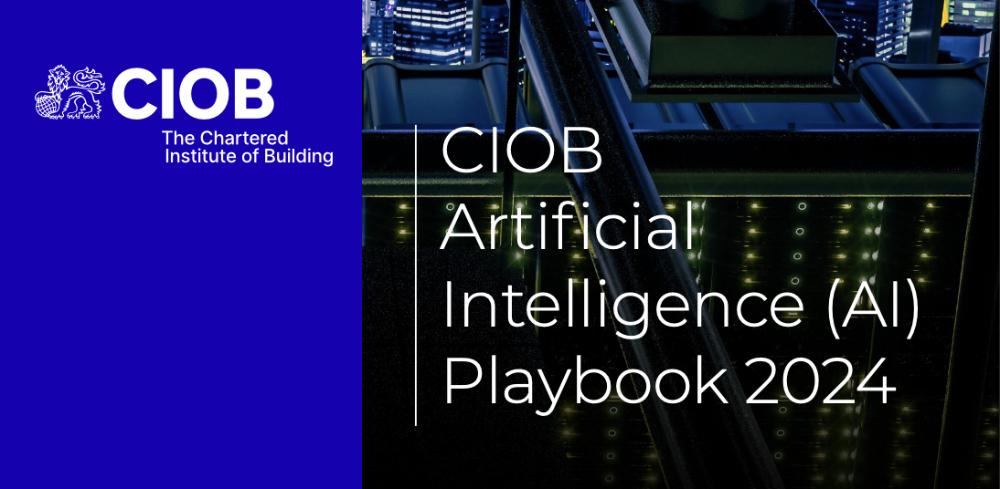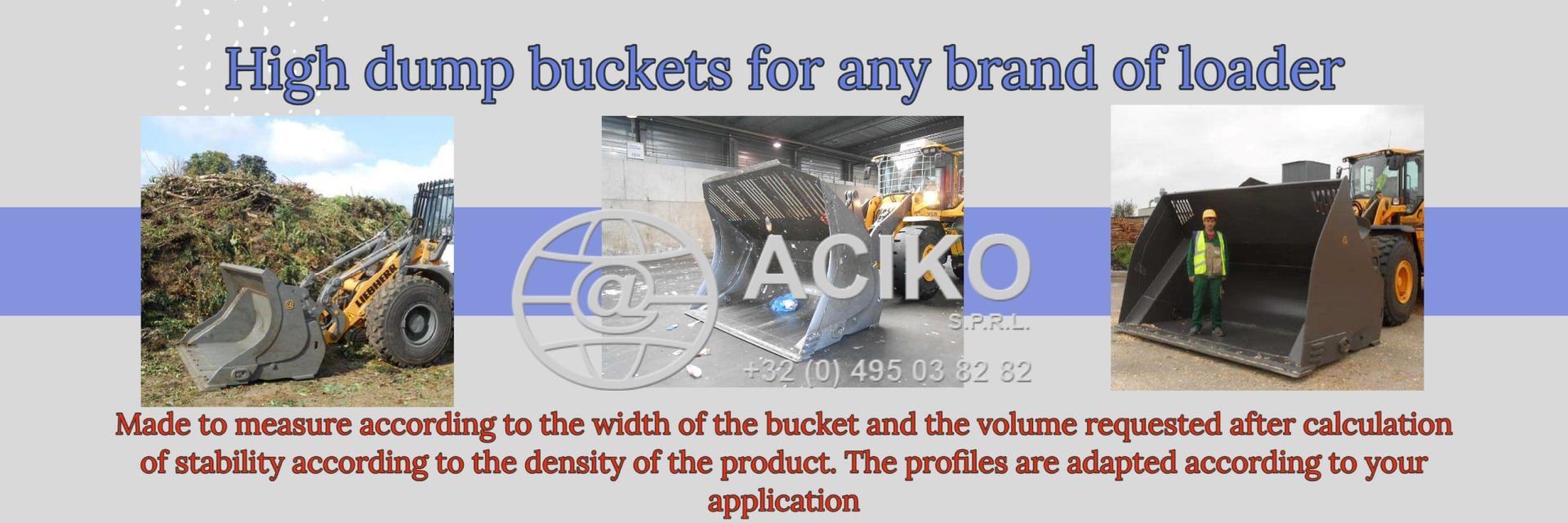R.E.News future Technology-New guidance on AI and construction issued
 28/06/24-FR-English-NL-footer
28/06/24-FR-English-NL-footer
Publication de nouvelles directives sur l'IA et la construction
 Image-CIOB
Image-CIOB
Un nouveau manuel sur l’utilisation de l’intelligence artificielle (IA) dans le secteur de la construction a été publié par le comité consultatif sur le numérique et l’innovation du Chartered Institute of Building (CIOB).
Le CIOB est un organisme professionnel international destiné aux personnes travaillant dans le secteur de la construction, créé en 1834 et qui compte 48 000 membres dans 100 pays qui se consacrent à mener un changement culturel dans l'environnement bâti.
Il a été rédigé pour les organisations de l'environnement bâti de toutes tailles qui cherchent à se familiariser avec la technologie de l'IA et à comprendre comment en tirer le meilleur parti. Il comprend des moyens d'évaluer son efficacité, tout en prenant également en compte des questions telles que l'éthique, la cybersécurité et la protection des données. Il existe également une liste de contrôle pour aider les nouveaux entrants, les premiers utilisateurs et les praticiens expérimentés de l’IA à prendre des décisions concernant leur utilisation de la technologie.
Le manuel fait référence à la façon dont l'IA a le potentiel de révolutionner les processus de travail des petites et moyennes entreprises (PME), en leur permettant d'être compétitives à plus grande échelle. Il indique que grâce à l'utilisation de l'IA, les PME peuvent exploiter des capacités qui n'étaient autrefois disponibles que pour les grandes entreprises de construction, ce qui signifie qu'elles peuvent rivaliser sur un pied d'égalité.
Il répond également aux préoccupations et aux malentendus de l’industrie concernant l’impact de l’IA sur le marché du travail. Il affirme que l’IA dans la construction peut améliorer les capacités humaines plutôt que de les remplacer, car son utilisation nécessite un certain niveau de compétence et de compréhension de l’utilisateur, ce qui signifie que de nombreux rôles existants évolueront – passant d’opérateurs à superviseurs, où les professionnels se retrouveront de plus en plus à vérifier et valider le travail de l’IA.
« Comprendre l'IA dans le contexte de notre secteur est d'une importance vitale pour déterminer et façonner la manière dont elle pourrait ouvrir la voie à de nouvelles opportunités », a déclaré David Philp, président du comité consultatif sur le numérique et l'innovation du CIOB et l'un des auteurs du manuel.
« L'IA peut énormément soutenir la gestion de projet et de construction, en analysant de grands volumes de données de projet tout au long de la chaîne de valeur, en repérant les risques potentiels pour la sécurité grâce à la vision par ordinateur et en offrant des informations pour une prise de décision plus intelligente. Il peut également prendre en charge l’automatisation de tâches répétitives, telles que la saisie quotidienne de données, le remplissage de formulaires et la génération de rapports, qui peuvent toutes dominer la journée d’un directeur de construction et sont donc là pour être adoptées.
NJC.© Info CIOB
------------------------------------------------------------------------------------------------------------------
 28/06/24-English
28/06/24-English
New guidance on AI and construction issued
 Image-CIOB
Image-CIOB
A new playbook on the use of Artificial Intelligence (AI) in the construction industry has been published by the Chartered Institute of Building’s (CIOB) Digital and Innovation Advisory Panel.
CIOB is an international professional body for those working in the construction industry, which was established in 1834, and has 48,000 members across 100 countries dedicated to leading a cultural shift in the built environment.
It has been written for built environment organisations of all sizes seeking to get to grips with AI technology and understand how to get the best from it. It includes ways to evaluate its effectiveness, while also considering matters such as ethics, cyber security and data protection. There is also a checklist to support new entrants, early adopters and experienced AI practitioners in making decisions about their use of the technology.
The playbook references how AI has the potential to revolutionise working processes for small and medium enterprises (SMEs), by enabling them to compete at a larger scale. It says through use of AI, SMEs can tap into capabilities that were once only available to large construction organisations, meaning they can compete on a more level playing field.
It also addresses industry concerns and misunderstandings about AI’s impact on the jobs market. It says AI in construction can enhance human capabilities rather than replace them as its use requires a certain level of user skill and understanding meaning many existing roles will evolve – transitioning from operators to supervisors, where professionals will increasingly find themselves checking and validating AI’s work.
“Understanding AI in the context of our sector is vitally important to help determine and shape how it might usher in new opportunities,” said David Philp, chair of CIOB’s Digital and Innovation Advisory Panel, and one of the playbook’s authors.
“AI can immensely support project and construction management, analysing large volumes of project data across the value chain, spotting potential safety risks through computer vision, and offering insights for smarter decision-making. It can also support the automation of repetitive tasks, such as everyday data entry, form filling, and report generation, all of which can dominate a construction manager’s day so it’s there to be embraced.”
NJC.© Info CIOB
---------------------------------------------------------------------------------------------------------------
 28/06/24-NL
28/06/24-NL
Nieuwe richtlijnen over AI en constructie uitgegeven
 Image-CIOB
Image-CIOB
Een nieuw draaiboek over het gebruik van kunstmatige intelligentie (AI) in de bouwsector is gepubliceerd door het Digital and Innovation Advisory Panel van het Chartered Institute of Building (CIOB).
CIOB is een internationale beroepsorganisatie voor mensen die werkzaam zijn in de bouwsector, opgericht in 1834 en heeft 48.000 leden in 100 landen die zich inzetten voor het leiden van een culturele verschuiving in de gebouwde omgeving.
Het is geschreven voor organisaties in de gebouwde omgeving van elke omvang die grip willen krijgen op AI-technologie en willen begrijpen hoe ze er het beste uit kunnen halen. Het omvat manieren om de doeltreffendheid ervan te evalueren, terwijl ook zaken als ethiek, cyberveiligheid en gegevensbescherming in overweging worden genomen. Er is ook een checklist om nieuwkomers, early adopters en ervaren AI-beoefenaars te ondersteunen bij het nemen van beslissingen over hun gebruik van de technologie.
Het draaiboek verwijst naar hoe AI het potentieel heeft om de werkprocessen van kleine en middelgrote ondernemingen (MKB) radicaal te veranderen, door hen in staat te stellen op grotere schaal te concurreren. Er wordt gesteld dat het MKB door het gebruik van AI mogelijkheden kan aanboren die ooit alleen beschikbaar waren voor grote bouworganisaties, waardoor ze op een gelijker speelveld kunnen concurreren.
Het gaat ook in op de zorgen en misverstanden in de sector over de impact van AI op de arbeidsmarkt. Er wordt gesteld dat AI in de bouw de menselijke capaciteiten kan vergroten in plaats van deze te vervangen, omdat het gebruik ervan een bepaald niveau van gebruikersvaardigheden en begrip vereist, wat betekent dat veel bestaande rollen zullen evolueren – van operators naar supervisors, waarbij professionals steeds vaker het werk van AI zullen controleren en valideren.
“Het begrijpen van AI in de context van onze sector is van cruciaal belang om te helpen bepalen en vormgeven hoe het nieuwe kansen kan inluiden”, zegt David Philp, voorzitter van CIOB’s Digital and Innovation Advisory Panel, en een van de auteurs van het draaiboek.
“AI kan het project- en bouwmanagement enorm ondersteunen, door grote hoeveelheden projectgegevens in de hele waardeketen te analyseren, potentiële veiligheidsrisico’s op te sporen via computervisie en inzichten te bieden voor slimmere besluitvorming. Het kan ook de automatisering van repetitieve taken ondersteunen, zoals de dagelijkse gegevensinvoer, het invullen van formulieren en het genereren van rapporten, die allemaal de dag van een bouwmanager kunnen domineren, zodat het er is om te worden omarmd.”
NJC.© Info CIOB
----------------------------------------------------------------------------------------------------------------
Date de dernière mise à jour : 28/06/2024

















